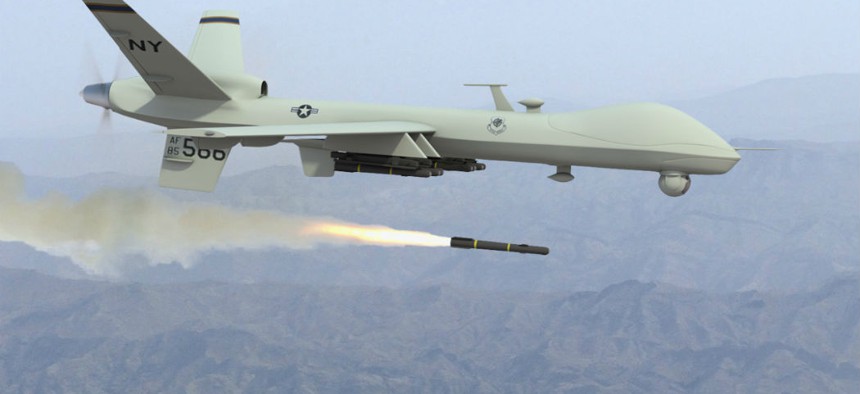Concerns mount over spread of hypersonic technology
RAND study calls the emerging missile capability "destabilizing.”
Advances in hypersonic missiles capable of sustained flight and maneuverability are raising proliferations concerns because of their ability to defeat current missile defenses, a capability that would "further compress the timelines for response by a nation under attack," a new report warns.
Hypersonic missiles are defined as air vehicles capable of flying faster than 5,000 kilometers per hour (about 3,106 miles per hour, or Mach 4.08). Hypersonic capabilities have been widely demonstrated for relatively short flights, but capabilities are evolving rapidly. "Technology is just now emerging that [would] enable sustained hypersonic flight," noted Richard Moore, a senior engineer and analyst with RAND Corp.
Those technologies are being incorporated into hypersonic cruise missiles and glide vehicles, Moore added. The former is launched from aircraft, powered during flight and could reach targets in as little as six minutes. Launched by rockets, glide vehicles would ride the upper atmosphere to their targets with little or no warning, Moore said.
The upshot, RAND analysts emphasized, is that sophisticated hypersonic missile technology is destabilizing. "It increases the likelihood of a strategic conflict, and it decreases the ability to defend against it," said Richard Speier, lead author of the study and a political scientist at RAND.
The policy think tank reckons that China, Russia and the U.S. are less than a decade away from deploying hypersonic missiles. Technical and engineering challenges related to so-called scramjet propulsion and materials fabrication would make it harder for other countries to develop hypersonic technology. Some will attempt to acquire the technology, and RAND worries that the leading military powers will be tempted to export it.
So, the new RAND study argues that China, Russia and the United States must forge a nonproliferation regime to stop the spread of hypersonic technologies. It recommends banning the export of complete hypersonic platforms and key subsystems. It also calls for tighter controls on dual-use technologies such as hypersonic engines and fuels, sensors and navigation aids.
"Their proliferation beyond [China, Russia and the United States] could result in other powers setting their strategic forces on hair-trigger states of readiness," the RAND study warns. "And such proliferation could enable other powers to more credibly threaten attacks on major powers."
Current missile defenses against ballistic missiles can zero in on targets with flight paths determined by speed and gravity. By contrast, the combination of maneuverability and speed makes hypersonic missiles "unpredictable and extremely difficult to defend against," Moore added.
The RAND study concluded there is probably less than a decade to slow the proliferation of hypersonic missiles and related technologies beyond China, Russia and the U.S. In the meantime, the study noted the diffusion of hypersonic technology is already underway in Australia, Europe, India and Japan.
The U.S. Air Force and an Australian defense agency reportedly tested a hypersonic vehicle dubbed HIFiRE (Hypersonic International Flight Research Experimentation) in July.




